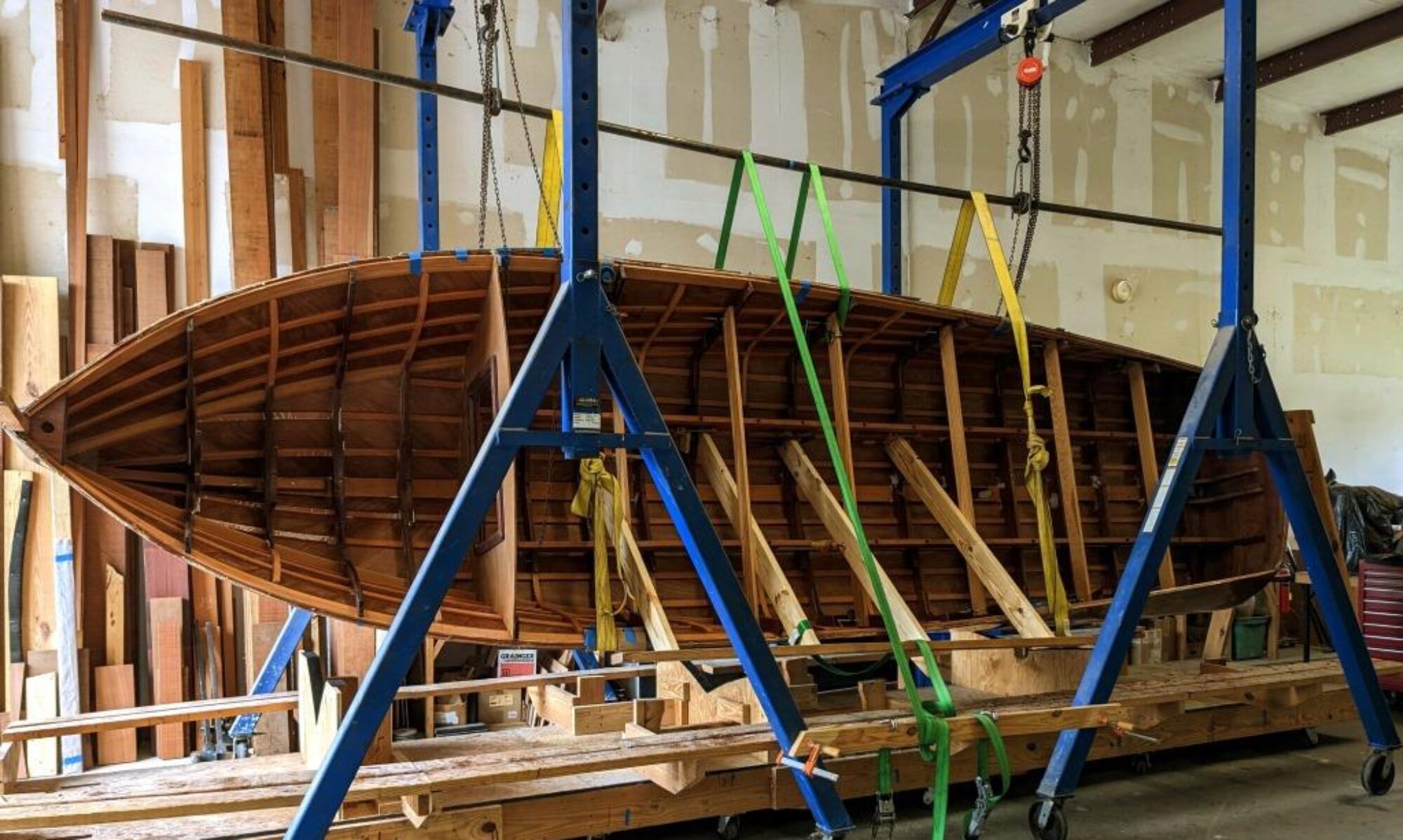
I’m restoring the foredeck for a 2013 Riva Iseo. I talked about working on the swim platform in my previous post, where I said we’d discuss options for the foredeck next. I thought briefly about trying to repair those bad patches, but I decided against that option because I would have to strip the entire finish without sanding through the thin veneer of mahogany and holly. At the time I thought it was about 1/16 inch thick. It turned out to be much closer to 1/32 inch. Then there was the problem of matching grain, joint lines that would show, etc.
So that left what looked like three options. Here they are, in order of complexity and expense:
Order the deck from Riva, remove the old deck and glue down the new one. I wasn’t sure if the deck was available, and it would have to come from Italy if they would provide it at all. But it was worth a shot. This was promising at first, but turned out to be a dead end.
Have the mahogany/holly veneer laid up by a veneer manufacturer, and laminate that to a substrate of marine plywood. This was pretty promising as well, but veneer is cut with a very sharp knife, not a saw blade. I wasn’t willing to go thinner than 1/16 inch, and that was pushing it. Any less and sanding through during final fairing would be a real hazard. That was too thick for the maker’s knife to cut crisply. We would have had to settle for joint lines that were fuzzy, with jagged edges if one looked closely. Not the look we were going for.
Hand lay the deck myself. This is the how we ended up. I would have to use quarter-sawn mahogany to get the proper grain. I had some mahogany in the shop already. (I am building a mahogany runabout, after all.) But I needed to find a source for long, clear holly. Holly is a small tree, and most of it is very knotty. But I found some beautiful stuff that worked perfectly. I could also make this deck considerably thicker than the 1/16 minimum I was going to have to settle for otherwise. So let’s get started!

Long before the final decision was made to lay the deck myself, I knew I needed to make patterns for the shapes I would be cutting out. There were three patterns for the four areas of the deck. The two side pieces were mirror images of each other, so one pattern that I could flip over would work for that part.
I used inexpensive 1/8 inch luan for the preliminary patterns. I then used these to cut out the final patterns out of 1/2 inch birch plywood. The birch patterns would be used to cut out the final deck pieces.

There are a number of ways you can make a pattern. One of the most common is a method called spiling. I used it to make the planks for the Palm Beach mahogany runabout I’m working on. But in this case, I decided to trace the rough outline onto clear nylon sheeting, and transfer that to the luan. Cut it out, put it on the boat, and voila! After many painstaking hours of tuning with a block plane, chisels, sanding blocks, rasps, and whatever else you can think of to remove wood, you have the shape you will use to cut out your new deck piece!
I repeated the process for the other two patterns I needed. By this time, my first two options hadn’t panned out. So it was time to start milling wood to lay the deck myself. We’ll talk about that in a couple of weeks.

exciting!